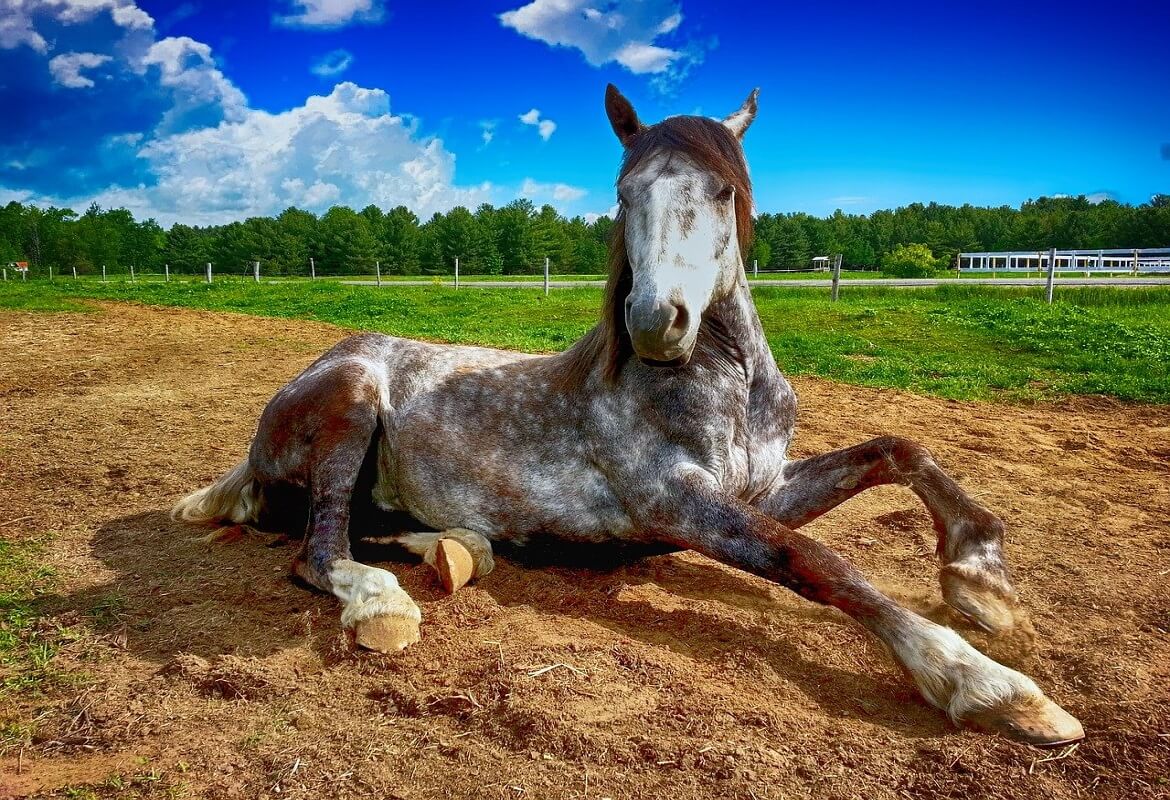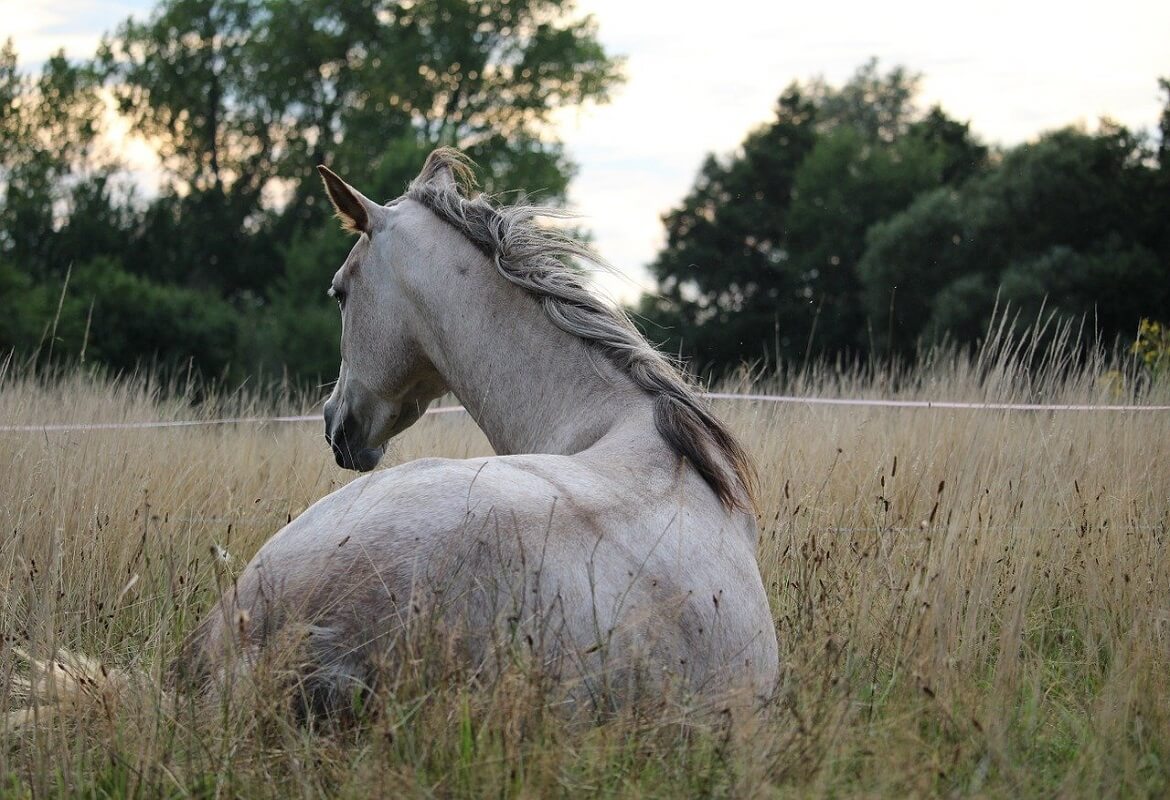Horse on the ground: what you should know about it
A horse that is unable to stand up on its own is a major problem and a real ordeal for those caring for the animal. Getting a horse back on its feet on the ground is a delicate and complex operation because the weight of the animal comes into play. The lack of cooperation of the animal in a difficult situation also plays a part. In this article, we will give you useful information if you find yourself faced with a horse on the ground.
Getting a horse back on its feet: the details to know
The ability of horses to survive is strongly linked to their general physical condition, the environment in which they live and the care of their carers. An animal that lies on the ground for a long period of time, following numerous attempts to get back on its feet, will give the impression of having given up for good. This is especially true in the case of an older animal. However, if you manage to help the horse to the ground and allow it to get back on its four legs, the animal will almost certainly have a better chance of returning to normal.
Lifting a horse off the ground
Getting up from a lying position is a rather complicated procedure even for a horse in good health. The horse on the ground will have to stretch its front legs completely out in front of it, and then pull itself up with its hind legs in order to get up again. In some cases this can be extremely difficult for an older animal to cope with, especially if they have neurological or muscular problems as they get older.
Having said that, it is useful to point out that horses do not just lie down because of age-related problems. Some horses like to lie down in the sun or in their paddock at certain times of the day. However, only a few of them do this. Therefore, if you are not familiar with their habits, it is important to check that there is no health problem.

The emergency procedure
There are some very useful guidelines to follow if the need arises to deal with an emergency involving a stranded horse in difficulty. Researchers and experts in the field recommend first of all finding an answer to three very specific questions. These questions will help give a clearer picture of the situation, which can then be promptly communicated to the veterinarian. The questions to be answered are as follows:
- How long has the animal been lying down?
- Does he seem to be in any kind of pain or is he injured?
- Does the horse react to environmental stimuli such as noise?
Once you have found the answers, contact your vet and let him know. Then you should approach the animal and follow the doctor’s instructions, taking great care and staying at a safe distance from its feet. When a horse has been lying on the ground for some time and is in difficulty, it is likely to be confused and frightened. Trying to get back on its feet may result in movements that are very dangerous for those trying to help it.
Caring for the horse on the ground
Finally, once you understand what the animal’s problem might be, it is important to stabilise it and place it in the best possible condition for getting up. Lifting a horse on the ground sounds like a very complex task. However, by thinking clearly about the procedure and following your vet’s advice, you will be able to correctly help an older animal or a young horse. For a novice breeder, this can be difficult, but with time things will change. Keep following our blog for more advice and do not hesitate to evaluate our Foaling Alarms: C6 Evo and C6 Birth Control.

